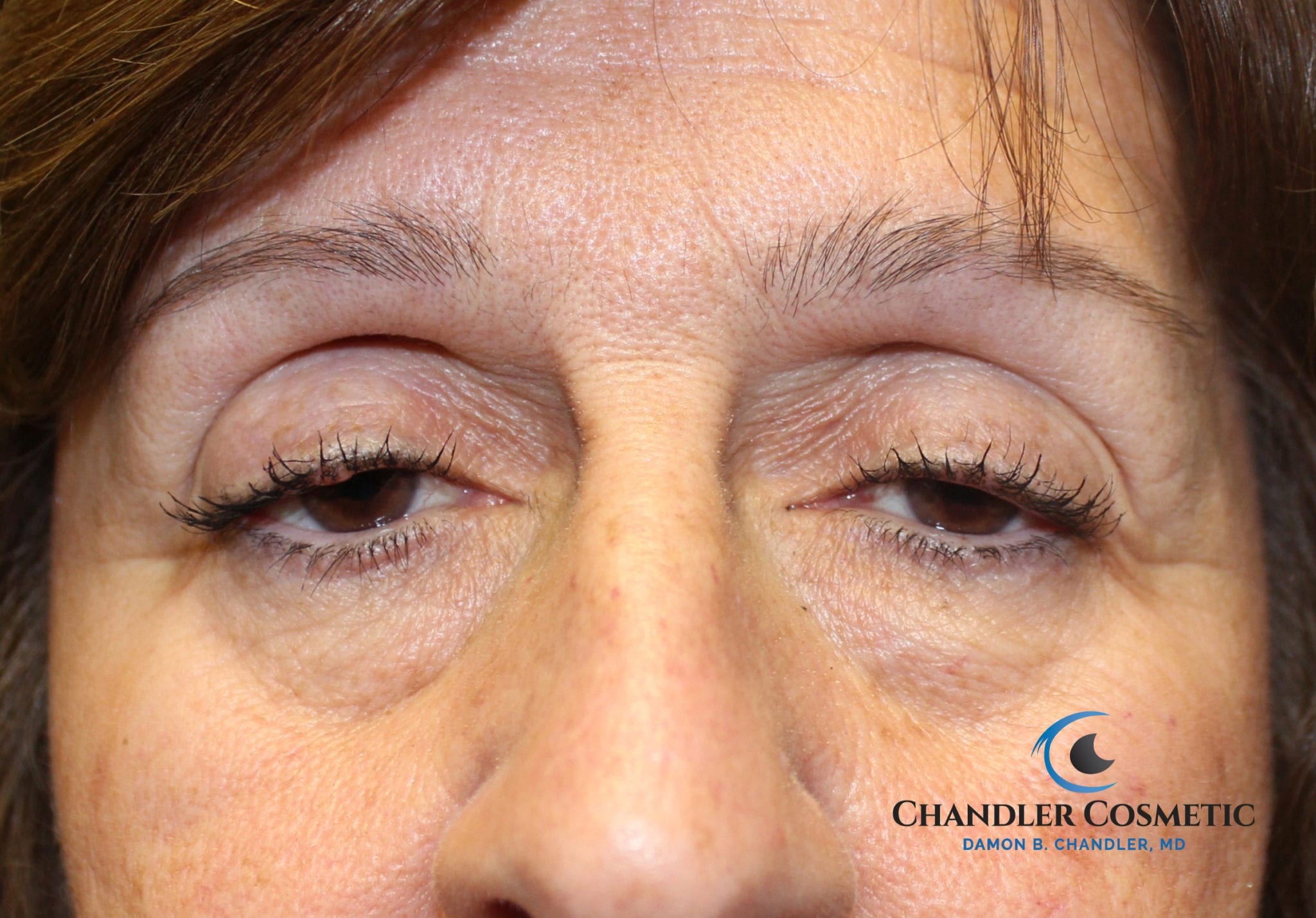 Ptosis (“toe”-sis) is the medical term for a drooping eyelid, specifically referring to the position of the upper eyelid, not the skin itself. Severe ptosis can impede the upper field of vision, although it doesn’t cause blurry vision or hinder one’s ability to read an eye chart. Nevertheless, it can give individuals a tired, unbalanced, or aged appearance. Dr. Chandler is well-versed in diagnosing ptosis and, when required, performing droopy eyelid surgery to rectify the condition.
Ptosis (“toe”-sis) is the medical term for a drooping eyelid, specifically referring to the position of the upper eyelid, not the skin itself. Severe ptosis can impede the upper field of vision, although it doesn’t cause blurry vision or hinder one’s ability to read an eye chart. Nevertheless, it can give individuals a tired, unbalanced, or aged appearance. Dr. Chandler is well-versed in diagnosing ptosis and, when required, performing droopy eyelid surgery to rectify the condition.
The Causes of Drooping Eyelid (Ptosis)
By far the most common cause of ptosis is a weak eyelid muscle due to aging. The vast majority of the Ptosis cases that Dr. Chandler sees are as a result of aging or stretching out of upper eyelid muscles (from trauma, long term contact lens wear, prior upper eyelid surgery, history of a severe black eye, and many other possibilities). But the cause of a drooping eyelid isn’t always obvious. This is because the position of upper eyelid involves muscles, nerves, and the skin of the eyelid along with the position of the eyebrows.
How alert, awake or impaired you are also can affect the openness of the eyelids as well. We all know that eyelids droop when we are really tired, drunk or under the effects of drugs (like anesthesia or marijuana). The muscles that primarily opens the eyes are called levator muscles (think elevator); they allow eyelids to move up. They can weaken with age or due to injury. Some individuals may even be born with congenitally weaker levator muscles, leading to ptosis from a young age, which may later require droopy eyelid surgery.
Nerve damage is another factor that can lead to ptosis. A prevalent cause of such damage in the facial and eye region is Horner’s syndrome, which can result from stroke, brain injuries, spinal cord damage, or even lung cancer. These conditions can also influence pupil size. Beyond this, neurologic conditions like myasthenia gravis, an autoimmune disease impacting muscle and nerve communication, can also lead to ptosis. In cases where these rare causes are suspected, patients may be referred to specialized neurologists for further evaluation. It’s important to note, however, that droopy eyelid surgery is commonly sought due to the natural weakening of eyelid muscles with aging, which remains the primary cause of ptosis.
When is Droopy Eyelid Surgery Needed?
Even though the symptoms of ptosis, which manifest as a drooping of the upper eyelid, seem straightforward, determining when droopy eyelid surgery is needed requires true expertise. With so many causes, variables, and possible associated conditions, there is nothing simple about diagnosing Ptosis.
Treating the condition (Ptosis repair)
Dr. Chandler’s approach to treating ptosis depends on its cause. If the ptosis results from injuries, tumors, nerve damage, or cancer, he would refer the patient to a neurologist or another specialist. In cases linked to myasthenia gravis, a treating neurologist might prescribe medication to manage the condition. However, the vast majority of healthy adults with ptosis undergo outpatient surgery. This procedure tightens the eyelid muscle, helping to lift and open the eyelid more effectively.
Congenital ptosis (ptosis in childhood) often requires surgery because the levator muscles have not developed and usually do not function properly. In these cases adult type levator muscle surgery is not effective at correcting this complex congenital problem. Dr. Chandler would help direct patients and families to university medical centers in Philadelphia that treat children and congenital ptosis.
Ptosis will not correct itself. Most cases of ptosis are mild and will not qualify as a medical condition that is covered by health insurance. Only severe cases typically in elderly patients are considered a medical necessity needing correction. But commonly people strongly dislike when one eyelid is not symmetric with the other due to drooping. So, Dr. Chandler frequently performs cosmetic Ptosis repair to achieve symmetry between the eyelids. Few surgeons specialize in Ptosis Surgery and experts like Dr. Chandler spend years of training to learn how to surgically repair this challenging condition.
If you suspect you have ptosis or a drooping eyelid, reach out to Dr. Chandler, a leading expert in drooping eyelid surgery. Schedule a consultation in Philadelphia, PA, or South Jersey, NJ, by calling (609) 877-2800 or (215) 885-6830.

